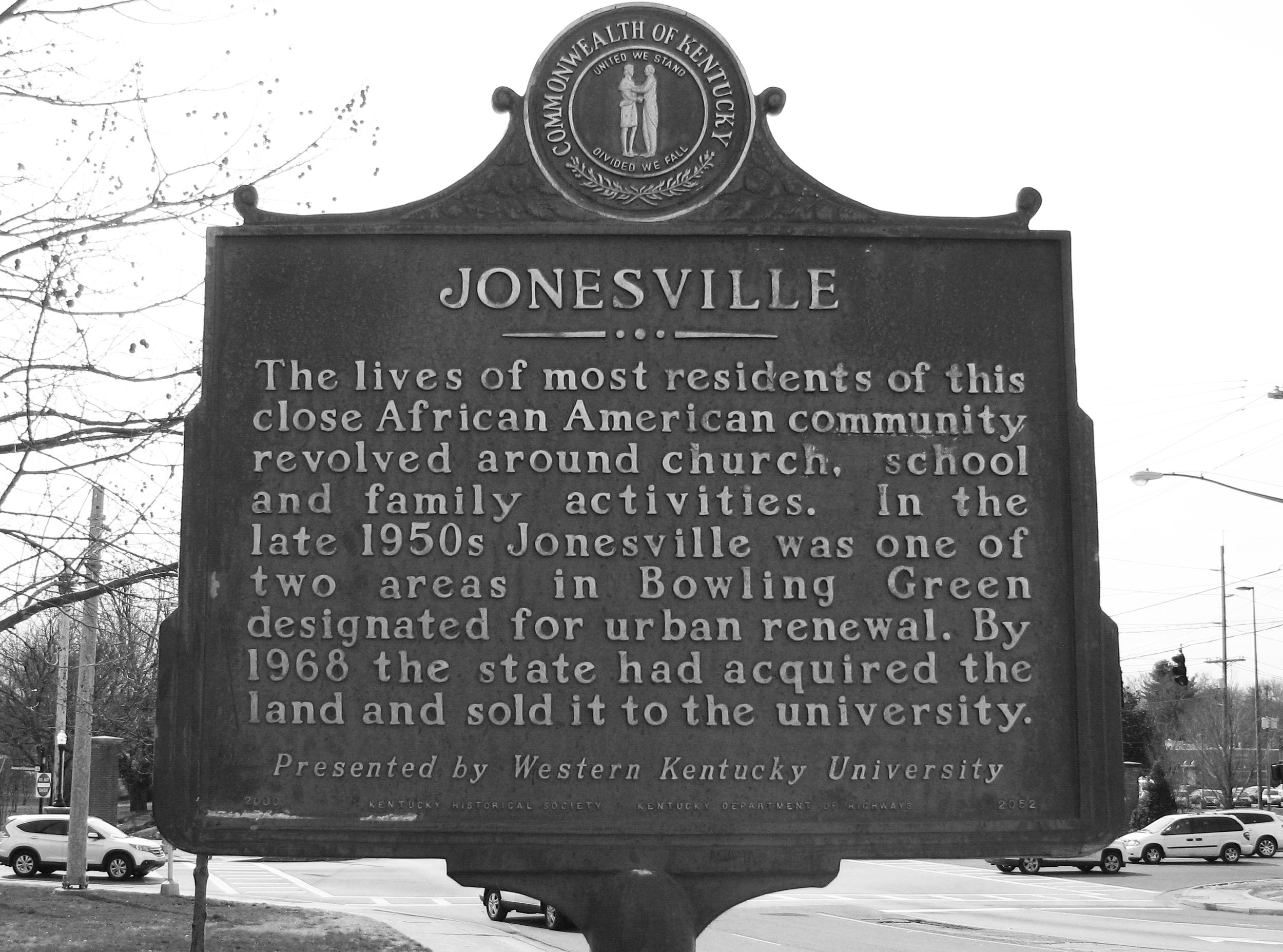Visit Downtown
Bowling Green
The Communities of Shake Rag and Jonesville
State Street Baptist Church (built 1898)
The Shake Rag and Jonesville communities offered African Americans safe-haven from the rampant segregation and racism that thrived in many other parts of Bowling Green. These communities had their own churches, schools, businesses, grocery stores and an extremely popular nightlife. A vivacious nightlife grew from the night clubs established in Shake Rag and citizens often went out dancing on the weekends. Citizens mingled at local restaurants and enjoyed good food and great music. The lives of the residents in these communities revolved around church, school, and family actitivies. The close-knit nature of these communities provided these citizens a haven from the pressures of living in and traveling through segregated Bowling Green and allowed these families to lead normal, safe, and successful lives.
Shake Rag Historical District
Racism was commonplace in Bowling Green, Kentucky in the 1950s. Many African Americans feared to step foot into certain areas of the city. African Americans found a safe-haven in a community called Shake Rag that was created by former slaves, families and soldiers who had fought for the Union during the Civil War.
Founded in the 1800s, Shake Rag grew to host a vibrant black community that included churches, schools, and businesses. Growing up in Shake Rag in the 1950s, Wathetta Buford, 71, recalled the safety she felt in Shake Rag.
“When I think back, as a child, that was the only place I could go,” Buford recalled, raising her eyebrows. “Our parents felt free to let us go there, so that’s why we said it was safe. We weren’t allowed to go anywhere else in Bowling Green.”
Not only was Shake Rag a source of safety for the black community—it allowed their culture to blossom as well. A vivacious nightlife grew from nightclubs established and maintained by black entrepreneurs. Architecture illustrated a growing professional and middle class, with an abundance of families living in sleek, fashionable Bungalows. Shake Rag hosted a network of professionals such as educators, doctors, pastors, and business owners. Together, these men and women created a timeless culture in their community that superseded their time on earth and is still celebrated in Bowling Green today.
Jonesville
A marker on Western Kentucky University’s campus designates the location of Bowling Green’s vibrant black community that existed after the Civil War and through the 1950s. It was founded by formerly enslaved men and women, and continued to thrive into a close-knitted community that valued family.
Hundreds of people lived in the neighborhood. There were multiple businesses, two churches and an elementary school. By 1968, the state had acquired and sold the land to the university. Today, it would be difficult to picture a whole, flourishing community where WKU hosts their main sporting events.
Former Jonesville resident Maxine Ray has had only fond memories growing up in Jonesville. “We had everything we needed right there,” she recalled. Ray wishes to preserve its rich history through the efforts of the African American Museum.




